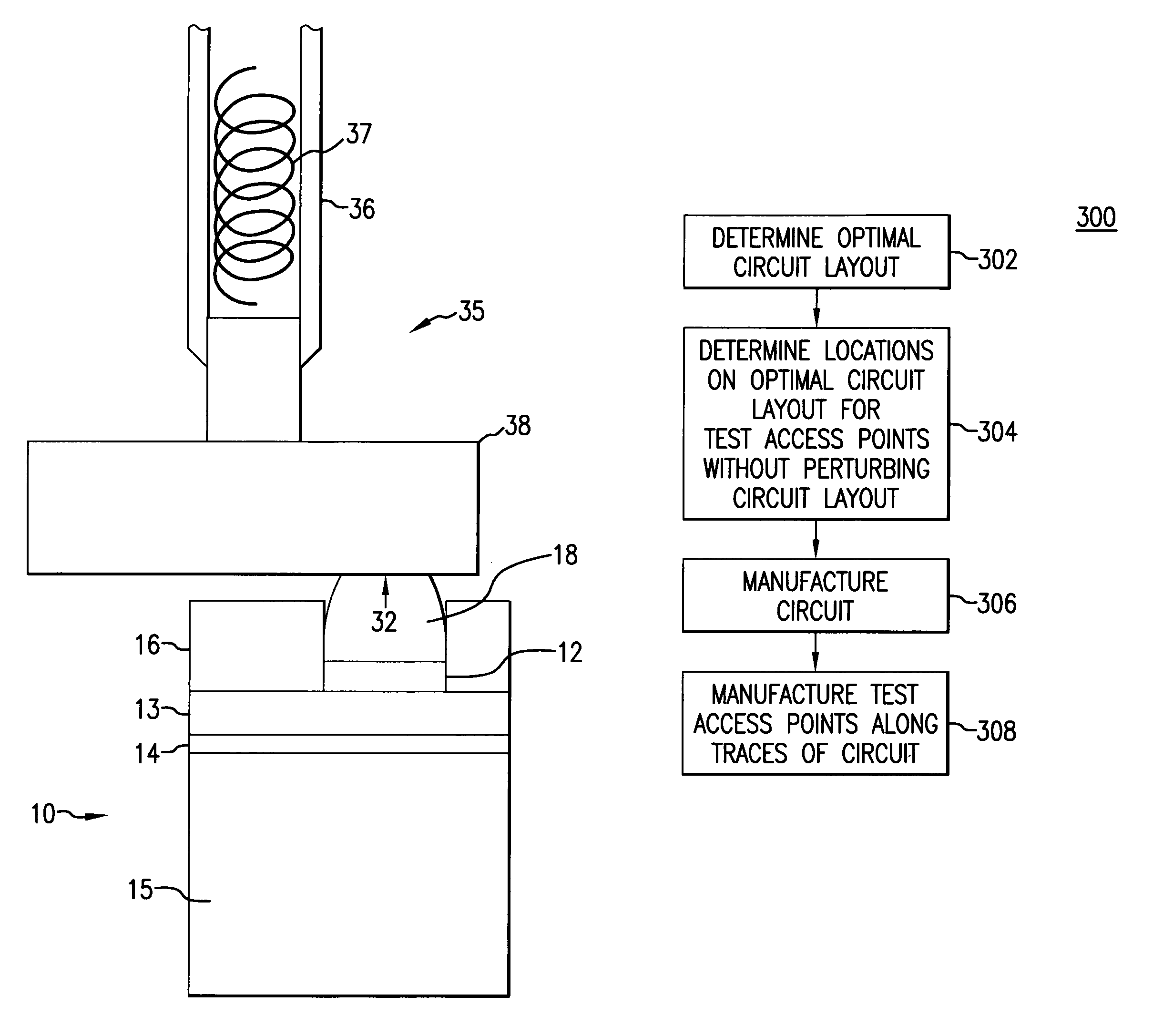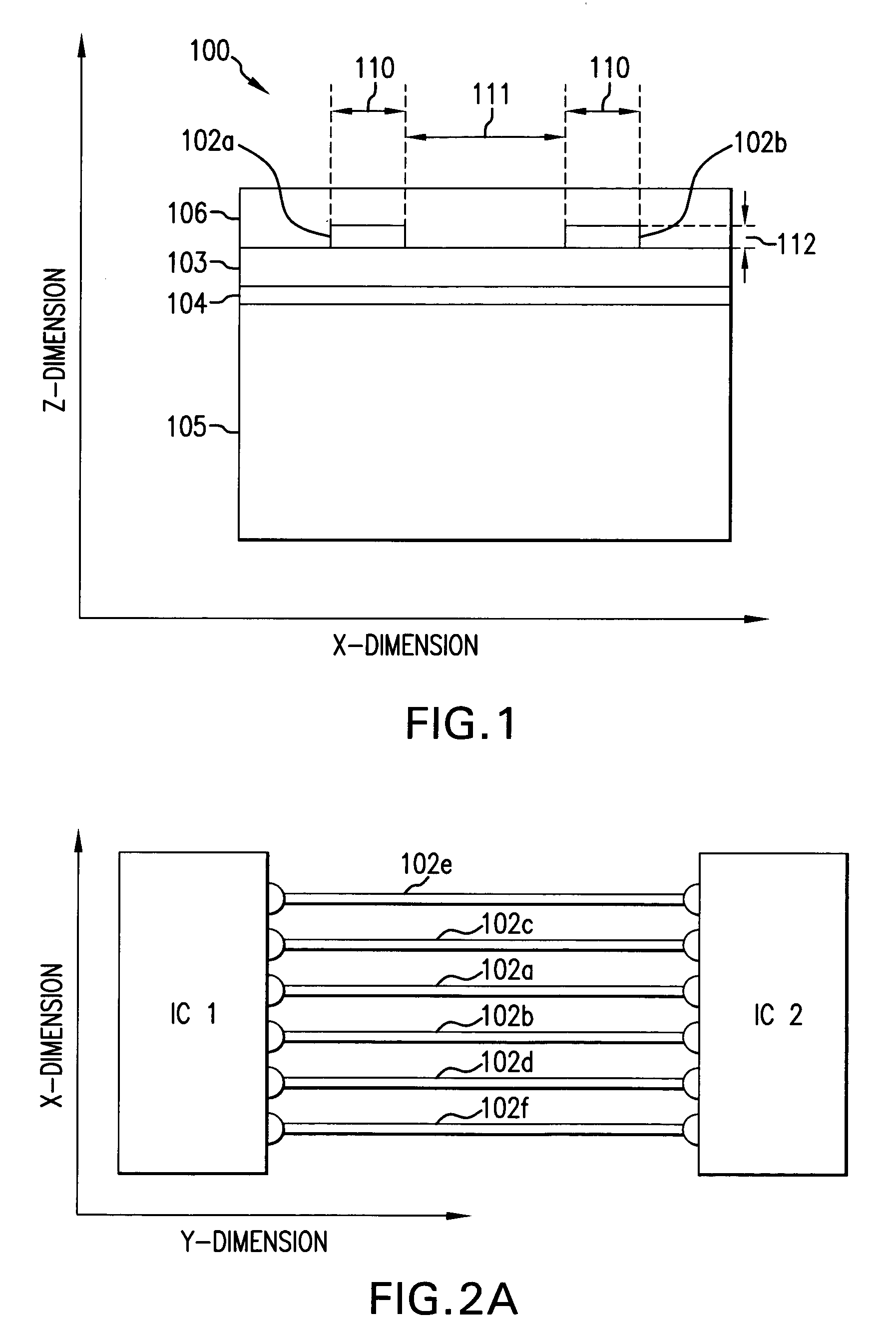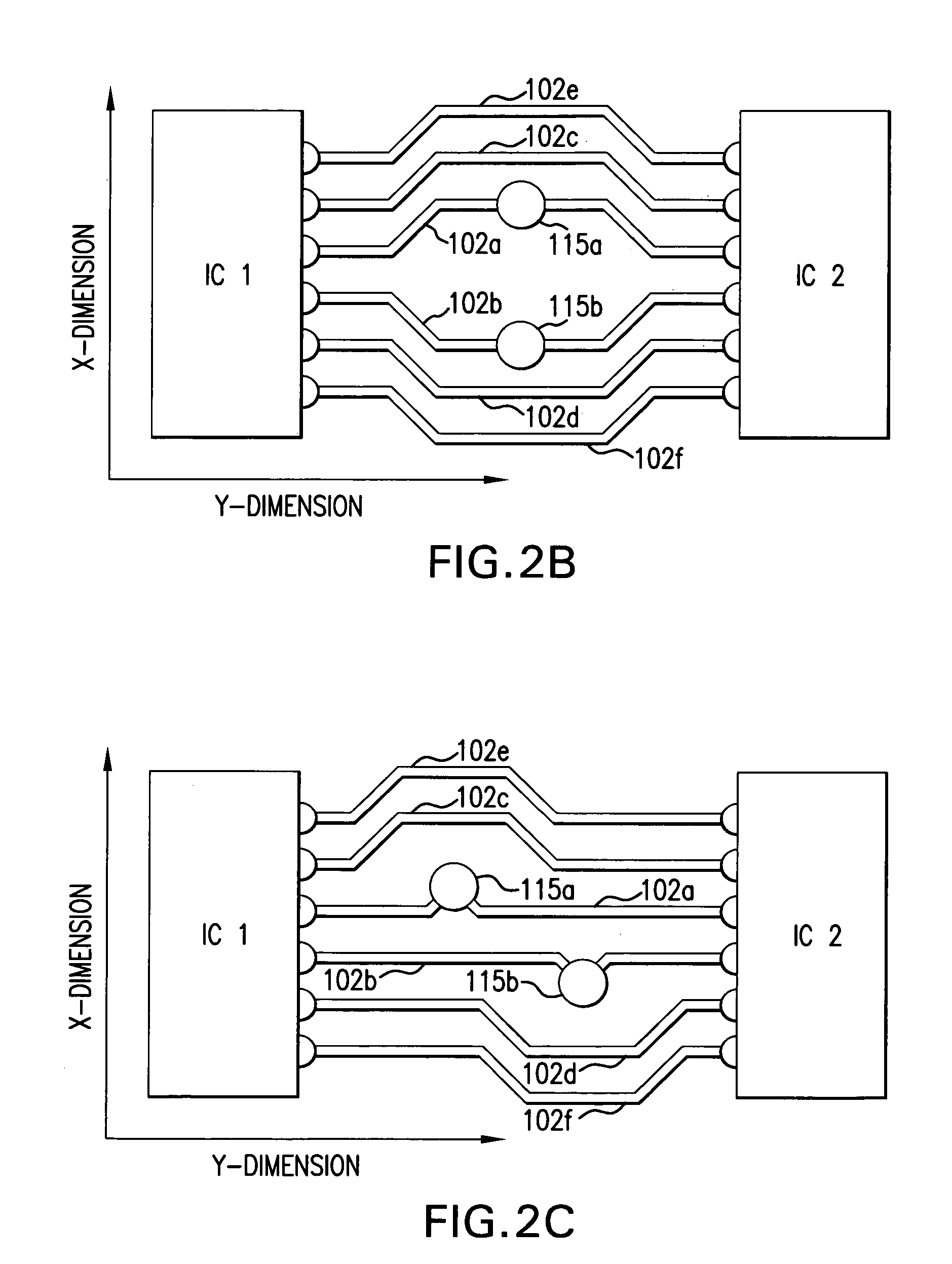Method and apparatus for layout independent test point placement on a printed circuit board
a printed circuit board and independent test technology, applied in the direction of printed circuit testing, instruments, measurement devices, etc., can solve the problems of increasing difficulty in reliably and repeatably hitting lower diameter targets, discontinuities in controlled impedances, and complex tester resources, so as to improve the performance of the board
- Summary
- Abstract
- Description
- Claims
- Application Information
AI Technical Summary
Benefits of technology
Problems solved by technology
Method used
Image
Examples
Embodiment Construction
[0036]Turning now in detail to the invention, on a trace defined in an x-, y-, z-coordinate system where the x-dimension represents the trace width, the y-dimension represents the trace length, and the z-dimension represents the trace thickness, it will be recognized by those skilled in the art that present techniques for test access point placement on a printed circuit board utilize only the x- and y-dimensions. The present invention takes a different approach by taking advantage of the z-dimension, that is, the trace thickness. In this regard, the test access point structure of the invention is a localized “high point” on a printed circuit board trace that does not significantly perturb the impedance of the trace and that can be targeted with a probe. Throughout this specification, test access point structure and bead probe structure are used interchangeably.
[0037]FIG. 3 illustrates an exemplary embodiment of a test access point structure implemented in accordance with the inventi...
PUM
 Login to View More
Login to View More Abstract
Description
Claims
Application Information
 Login to View More
Login to View More - R&D
- Intellectual Property
- Life Sciences
- Materials
- Tech Scout
- Unparalleled Data Quality
- Higher Quality Content
- 60% Fewer Hallucinations
Browse by: Latest US Patents, China's latest patents, Technical Efficacy Thesaurus, Application Domain, Technology Topic, Popular Technical Reports.
© 2025 PatSnap. All rights reserved.Legal|Privacy policy|Modern Slavery Act Transparency Statement|Sitemap|About US| Contact US: help@patsnap.com



